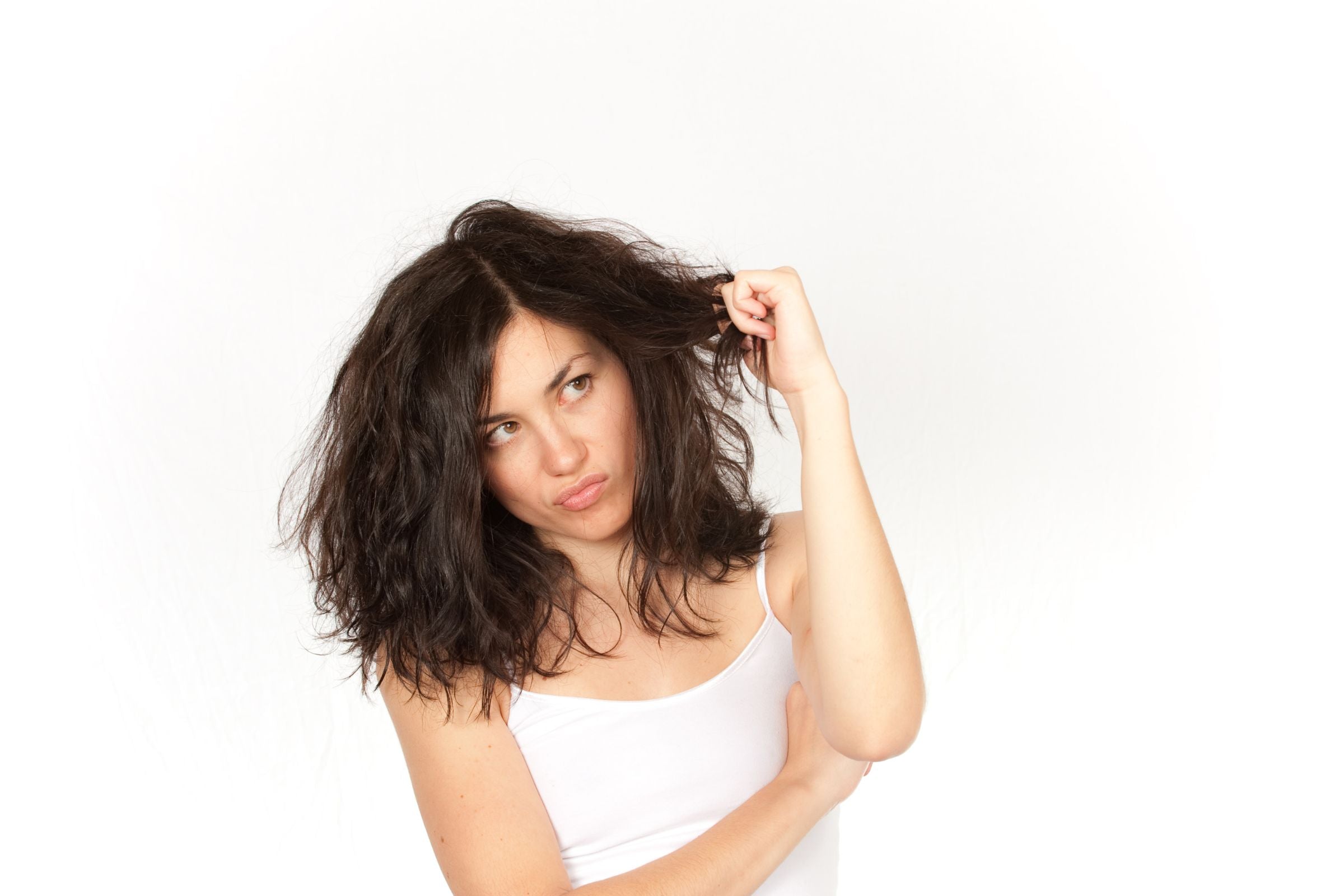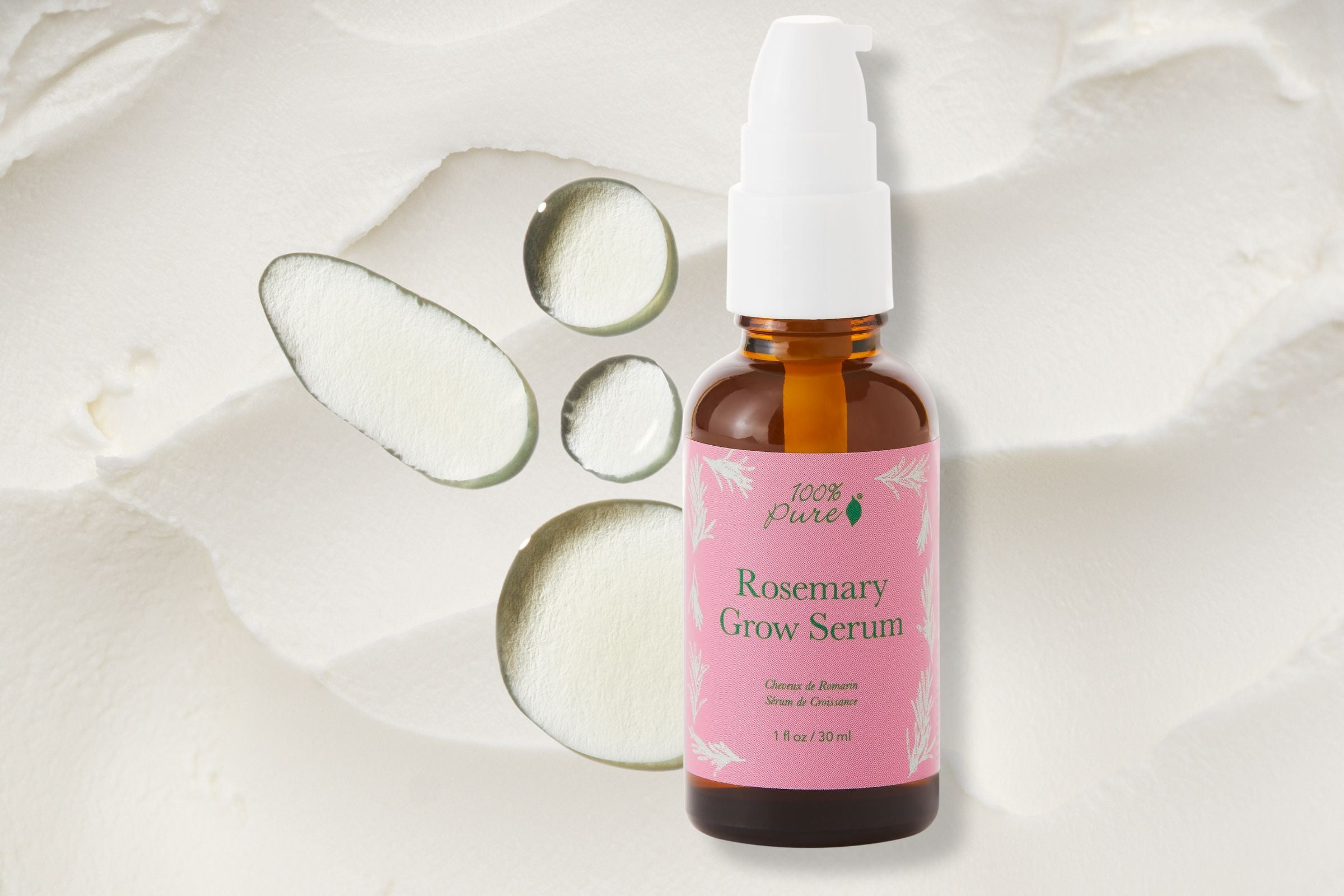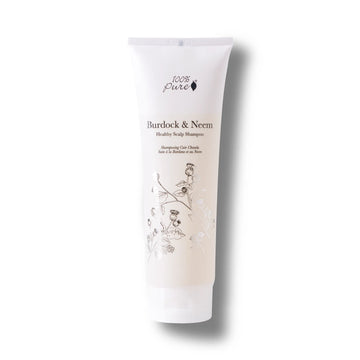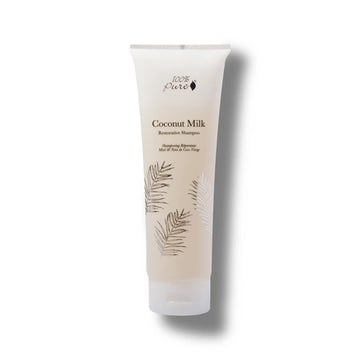A Dive into Hair Product Ingredients and Your Crowning Glory’s Real Friends
Written by: 100% PURE®
In today's age of instant access to information, being an informed consumer is more important than ever. The products we use daily, from our food to our personal care items, can profoundly impact our health, appearance, and overall well-being. Among these, hair care products hold a special place. After all, our hair is not just an aspect of our physical appearance; it’s an indicator of our internal health, a protective shield against environmental aggressors, and, for many, an essential component of our identity.
Choosing the right hair care products seems simple enough. You walk into a store or browse online, pick something that promises to add volume, shine, or whatever your hair might need, and go on with your day. However, beneath the shiny packaging and alluring claims lies a list of ingredients – some beneficial, others potentially harmful. Just as the right nutrients can make our hair shine, the wrong ingredients can lead to breakage, scalp irritations, and other undesired effects.
Hair, like any other part of our body, responds to what we feed it. When exposed to harmful chemicals and ingredients, its health can deteriorate over time. Think of it this way: if our skin can react adversely to certain ingredients (think rashes or breakouts), our scalp, which is an extension of our skin, can too. Moreover, unhealthy ingredients can strip the hair of its natural oils, leading to dryness, brittleness, and damage.
In the following sections, we will delve deep into some of the most common yet harmful ingredients found in hair products today. By being aware and choosing wisely, we can ensure that our hair gets the best care possible, and remains lush, healthy, and beautiful for years to come.
When we think about hair, we often envision the beautiful, cascading waves from shampoo advertisements or the sleek, shiny locks seen on the red carpet. However, behind the gloss and glam, many women wrestle daily with a plethora of hair issues that stand between them and their dream mane. Let's delve into these common hair woes and see how some ingredients in hair products might be making them worse.
Hair Fall: Perhaps the most alarming of all hair issues, hair fall can be triggered by numerous factors including stress, hormonal imbalances, and underlying health conditions. However, when you notice strands strewn all over your pillowcase or clogging up your shower drain, the hair products you're using could be the culprit.
Dryness: Dry hair not only lacks luster and shine, but it's also more prone to tangling and breaking. It’s akin to parched earth – devoid of moisture and life. This can be exacerbated by exposure to harsh weather conditions, frequent heat styling, and certain chemical treatments.
Frizziness: Ever felt like you’re sporting a lion’s mane, and not in a good way? Frizz can turn a good hair day into a bad one in minutes. It’s usually a result of a lack of moisture, but it can also be a sign of hair damage where the cuticle (outer layer of the hair) is raised, allowing moisture to pass through and swell the strands.
Split Ends: These are the bane of long-hair lovers everywhere. Split ends, or trichoptilosis, occur when the protective outer layer of the hair cuticle wears away due to external stressors such as heat styling, rough handling, and yes, you guessed it - certain hair products.

Hair products might promise the world in terms of shine, volume, and strength, but some of their ingredient lists reveal a murkier picture. Dive deeper, and you might find elements that do more harm than good. Let's take a closer look at these sneaky saboteurs you'd be better off avoiding.
Sulfates (SLS/SLES)
- Why They're Used: Sulfates are a type of detergent and surfactant, effectively removing dirt and oil from hair.
- Why to Avoid: They are too effective at their job, stripping hair of its natural oils. This can lead to dryness, and irritation, and can fade color in dyed hair. Additionally, they can cause scalp irritations in some individuals.
Parabens
- Why They're Used: Parabens are preservatives that extend the shelf life of products by preventing bacterial growth.
- Why to Avoid: There are concerns about parabens because they can mimic the hormone estrogen in the body. Although research is ongoing, some studies suggest that parabens might increase the risk of breast cancer and impact reproductive health.
Phthalates
- Why They're Used: Phthalates are used to improve the flexibility and softness of plastics in packaging. They also help fragrances last longer.
- Why to Avoid: Phthalates are suspected endocrine disruptors. Some studies have linked them to increased risks of developmental, reproductive, and neurological damage.
Formaldehyde
- Why They're Used: Formaldehyde is used as a preservative in some cosmetic products.
- Why to Avoid: Formaldehyde is a known carcinogen. It can cause allergic skin reactions, and it may also be harmful when inhaled, leading to respiratory issues.
Synthetic Fragrances
- Why They're Used: They're cheaper and more predictable than natural fragrances. They're used to give hair products a pleasant scent.
- Why to Avoid: "Fragrance" or "parfum" on an ingredients list can represent a blend of many chemicals, some of which might be harmful. These can trigger allergies, respiratory issues, and even hormone disruptions.
Artificial Colors
- Why They're Used: To make products visually appealing.
- Why to Avoid: Some artificial dyes can cause skin irritations and allergies. Moreover, certain dyes have been linked to more serious health issues, including potential links to cancer.
Silicones
- Why They're Used: Silicones give products a silky texture and make hair feel smooth and shiny.
- Why to Avoid: Over time, silicones can build up on the hair, weighing it down and making it look greasy. They can also prevent moisture from penetrating the hair shaft, leading to dryness.
Natural or safer synthetic alternatives (what ingredients to look for)
Tips on how to read and understand ingredient lists.
100% PURE Recommendations (include benefits of each and standout ingredients):
When it comes to hair care, it's crucial to opt for ingredients that are gentle on your scalp and strands. Whether these are natural ingredients or safer synthetics, the primary objective is to ensure they provide nourishment and protection without causing harm.
What ingredients to look for:
- Plant-based oils (like argan, coconut, and jojoba)
- Herbal extracts (such as neem, nettle, and burdock)
- Natural moisturizers (like aloe vera and honey)
- Vitamins and provitamins (e.g., vitamin E, pro-vitamin B5)
- Gentle cleansers (like coconut foam)
- Hydrosols (like rose hydrosol)
Tips on how to read and understand ingredient lists:
- First Five: The first five ingredients typically constitute the majority of the product's content. Focus on these to determine the product's primary ingredients.
- Avoid Hard-to-Pronounce Ingredients: While not a foolproof method, ingredients that sound more like chemical names and are hard to pronounce might be synthetic additives or preservatives.
- Research: Use apps or websites dedicated to cosmetic ingredients to understand the function and safety of each ingredient.
- Check for Certifications: Certifications like 'organic' or 'cruelty-free' can provide added assurance about the product's quality and ethical standards.
Burdock and Neem Healthy Scalp Shampoo
Benefits: Helps alleviate dryness, itching, and flaking. Promotes a healthy scalp and enhances hair softness and strength.
Standout Ingredients: Burdock, neem, nettle, rose hydrosol, aloe, vitamin E, and provitamin B5.
Burdock and Neem Healthy Scalp Conditioner
Benefits: Supports scalp hair health, alleviates dryness, and reveals softer, more vibrant hair.
Standout Ingredients: Burdock, neem, nettle, and a rich blend of herbs, oils, and botanicals.
Honey and Virgin Coconut Restorative Shampoo
Benefits: Intensely nourishes for glossier hair and promotes scalp hydration.
Standout Ingredients: Coconut foam, honey.
Honey and Virgin Coconut Restorative Conditioner
Benefits: Deeply moisturizes, detangles, and strengthens hair. Enhances softness and shine.
Standout Ingredients: Pro-vitamin B5, coconut oil, flax seed, sea kelp, aloe, rose hydrosol, honey.
Argan Oil
Benefits: Deeply moisturizes, nourishes, and softens skin and hair.
Standout Ingredients: Rich in vitamin E, phenols, carotenes, squalane, and essential fatty acids.
Rosemary Grow Serum
Benefits: Stimulates hair growth from active and inactive follicles for visibly increased fullness.
Standout Ingredients: Organic Rosemary in a clinically proven concentration.
Remember, hair care is personal, and what works best for one person might not work for another. Always patch-test new products to ensure they're suitable for your unique hair and scalp needs.
Newsletter Subscribe
for more blog updates and exclusive discounts

Your hair, often referred to as your ‘crown’, isn’t just an aesthetic feature; it's an indicator of your overall health and wellness. Every strand tells a story, whether it's one of nourishment or neglect. Hence, being conscious of the products you use is paramount not only for maintaining their beauty but also for your holistic well-being.
Long-term Benefits of Using Cleaner, Safer Hair Care Products
- Healthier Hair: When you remove harmful ingredients from your hair care regimen, you're allowing your hair to breathe, grow, and maintain its natural sheen. Cleaner products tend to be more gentle, preventing issues like hair thinning, split ends, and excessive hair loss.
- Scalp Health: Your scalp is like the soil in which your hair grows. Harsh chemicals can disrupt the pH balance, leading to problems like dandruff, itchiness, or even infections. Natural and safer products ensure a healthier scalp, providing a robust foundation for your hair.
- Reduced Chemical Exposure: On average, women use around 12 personal care products daily. Men use fewer but are not exempt. These products seep into our system, either through the skin or the respiratory system. By switching to cleaner hair care products, you're significantly reducing your daily intake of toxins.
- Environmental Impact: Cleaner hair products often have environmentally friendly packaging, and their production process is typically more sustainable. By choosing these products, you’re not just looking out for yourself, but also for Mother Earth.
- Economic Benefits: While the initial cost of some natural or safer products may be higher, the long-term benefits translate to fewer hair treatments and doctor visits due to damaged hair or affected health.
How can I transition to cleaner hair products without breaking the bank?
Transitioning to cleaner hair products on a budget is entirely possible. Here are some tips:
- Instead of replacing all products at once, start with the most frequently used ones.
- Look for brands that offer good quality at a reasonable price. Often, smaller or local brands provide great products without the high markups.
- Many natural hair treatments can be made at home using ingredients like coconut oil, apple cider vinegar, or aloe vera.
- Some natural products are available in bulk, which can be more cost-effective in the long run.
- Focus on products that stay on your hair the longest, like leave-in conditioners or treatments, before switching out shampoos or rinses.
Are natural ingredients always better for my hair?
While many natural ingredients can be beneficial for hair, not all are suitable for every hair type or condition. Similarly, not all synthetic ingredients are harmful. It's essential to research individual ingredients and consult professionals, especially if you have specific hair concerns. The key is to find a balance that works best for your unique hair needs.
How do I identify harmful ingredients on hair product labels?
To identify harmful ingredients, familiarize yourself with common culprits such as sulfates (like sodium lauryl sulfate), parabens, phthalates, formaldehyde, and synthetic fragrances, among others. Reading labels thoroughly and using resources like the Environmental Working Group’s Skin Deep database can also be helpful. Remember that ingredient lists usually go from highest to lowest concentration.
Can bad ingredients cause permanent hair damage?
While many harmful ingredients can cause temporary hair issues like dryness, breakage, or scalp irritations, consistent long-term use of such products can lead to more lasting damage. For instance, certain chemicals might weaken the hair shaft, leading to thinning or premature hair loss. However, the human body is resilient, and with the right care and treatment, many hair issues can be improved or reversed.
How soon can I see improvements after switching to better products?
The time it takes to see improvements can vary based on individual hair types, the products used previously, and the new product's effectiveness. Some people notice immediate changes, like increased shine or softness, within a few days or weeks. Others might require a few months, especially if repairing damage. Consistency is crucial. Regular use of healthier products will, over time, lead to noticeable positive changes.
Your hair is an extension of you. It frames your face, expresses your style, and often gives away signs of your health. It's essential, then, to treat it with the utmost care. By transitioning to cleaner, safer hair care products, you're making a significant investment in yourself.
Remember, while external beauty is transient, your well-being and health are lasting treasures. Embracing products free from harmful chemicals not only ensures that your hair remains in its best form but also positively affects your overall wellness. With numerous safer alternatives available today, making the switch has never been easier.
Take a moment today to examine the products on your bathroom shelf. Are they truly worthy of your crown? The choice to transition is in your hands, and with every safer product you choose, you're taking a step toward a healthier, radiant you.
- Tags: Hair, October-2023
We carefully hand-select products based on strict purity standards, and only recommend products we feel meet this criteria. 100% PURE™ may earn a small commission for products purchased through affiliate links.
The information in this article is for educational use, and not intended to substitute professional medical advice, diagnosis, or treatment and should not be used as such.














